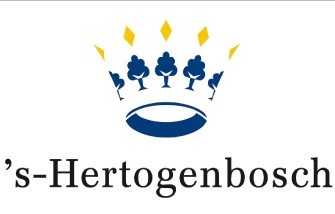Contact
Fortess City 's-Hertogenbosch
Bethaniestraat 4
Phone: +31 651143884
email
Website
The face of the city of 's-Hertogenbosch has been shaped by its fortifications for centuries. The most beautiful way to explore these fortified treasures is a round trip on Binnendieze. Discover the medieval beauty of 's-Hertogenbosch on a boat trip through the centuries-old canal system of Den Bosch. In the capital of the Dutch province of North Brabant, contemporary and regional art, culture and history merge in exciting and often innovative ways. The fortress city's favourable location on the Zuiderwaterlinie, embedded in the charming marshlands and nature reserves of North Brabant, provides an opportunity to actively explore the region on foot, by bike or by water.
FORTE CULTURA® Travel Recommendations
Experience World
The fortifications of 's-Hertogenbosch
The fortifications of 's-Hertogenbosch are a multitude of fortified monuments that were built in several stages from the 12th century onwards and were in use until the end of the 19th century. The majority of the fortifications were dismantled from 1874 onwards. The Fortification Act of War Minister August Willem Philip Weitzel allowed cities like 's-Hertogenbosch to demolish the fortifications. This was completed by 1890.
Citadel of 's-Hertogenbosch
After the capture of 's-Hertogenbosch by the Protestant Netherlands (1629) under Frederik Hendrik of Orange, an entire quarter of the city was razed and the citadel was built between 1637 and 1642. It was originally named Fort Willem Maria, but was called Fort Papenbril by the city's predominantly Catholic population.
Groot Tuighuis (Big Arsenal)
The historic building from 1430 now houses the Municipal Heritage Office 's-Hertogenbosch.
Bastions
Before the siege of the city, 9 bastions ( Bastion Baselaar, Bastion Deuteren, Bastion Grobbendonck, Hinthamerbolwerk, Muntelbolwerk, Bastion Orthenpoort , Bastion Sint-Anthonie, Bastion Sint-Marie and Bastion Vught) were built. Bastionder , an underground information centre about the military history of 's-Hertogenbosch and the national landscape of the Groene Woud.
Bossche Kruithuis (Powder house 's-Hertogenbosch)
The Powder House of s'-Hertogenbosch, built 1618-1620, is located not far from the Citadel. The hexagonal building with its distinctive courtyard was modelled on the old powder house of the city of Delft, which was destroyed in 1654 during the Delft Thunderclap, a gunpowder disaster. Thus the powder house of s'-Hertogenbosch is the last surviving "Kruithuis" from the time of the Spanish-Dutch War.
First city fortification
The first city wall was built shortly after the granting of city rights. The first wall was built around the donk in the centre of the town. This donk later became the market . This crenellated enclosure wall of brick and tuff had five city gates. Three of these gates are named after the capitals of the Duchy of Brabant, the Antwerpse Poort, the Leuvense Poort and the Brusselse Poort . These were built at the expense of the named cities. In addition to these gates, there were two water gates, the Waterpoort at Herman Moerkerkplein and the Waterpoort at Sint-Geertruikerkhof .
Second city fortification
From 1318, under Jan III of Brabant 's-Hertogenbosch, an extension of the fortifications began. The Antwerpse Poort had to give way. The Leuvense Poort and the Brusselse Poort were given a function. A total of eight gates were added. Baseldonkpoort , Boompoort , Koepoort , Molensteegpoort , Orthense Poort , Pijnappelsche Poort , Sint-Jans Poort and Vughter Poort. Around 1540 the Hinthamer Poort was built, which later became a bastion. The Aa also flowed through this gate.
Vughts Lunettes
During the Belgian Revolution, when Belgium was striving for independence from the United Kingdom of the Netherlands, some temporary fortifications were built on the route Cromvoirt - Helvoirt - Esch. After Belgium's independence in 1830, these were replaced by 8 lunettes in Vught. These were spared from the demolition of the fortifications in 1874 and are now part of the landscape. The area continued to be used for military purposes. During the German occupation Kamp Vught (concentration camp 's-Hertogenbosch), a former Nazi concentration camp was built in Vught near the town of 's-Hertogenbosch. Today it is the site of the Kamp Vught National Memorial.
Fort Isabella
Fort Isabella was built in 1617 during the Twelve Years' War as part of the southern defences of s'-Hertogenbosch. The Stichting Fort Isabellakazerne (Fort Isabella Barracks Foundation) really brings 400 years of history to life with its guided tours, amidst charming landscapes at the gates of s'-Hertogenbosch. Combined with a range of new activities and events, this creates a unique atmosphere where recreation, everyday life, work and education come together. Visitors and residents can enjoy a wide range of recreational, everyday, work and educational activities at this special place. Fort Isabella's special community concept brings new ideas and initiatives to life.
Fort Orthen and Fort Crèvecoeur
Fort Orthen (1630) is the youngest fort of 's Hertogenbosch. Together with Fort Crevecoeur it had to defend the fortified city from the north. Today it is a studio rent space for artists and home to the Orthens archive of local history circle the Orthense Schaar.
Bunker Provinciehuis s´-Hertogenbosch
Construction of the bunker in 's-Hertogenbosch began in 1966. In less than 2 years, an emergency administrative post was built on 52 x 25 m, with 248 piles, 3,300 m3 of special concrete and 297,000 kg of reinforcing steel. The bunker provides protection against conventional weapons and is NBC-capable. The provincial command post (PCBB) and the provincial government (PCCV) could act together from here in the event of an emergency. From 1970, the crisis center was ready in the bunker. For about 3 months, 70 to 80 strictly selected people could find shelter here. Some of the rooms are furnished as they were originally and can be visited during guided tours.
Monument and History
History Duke Henry I of Brabant granted the town town charter in 1185. The proximity to the duke's forest is said to be the origin of the town's name. The settlement itself was built on a donk, a sandy ridge surrounded by marshy terrain. Even with the first fortification, s'-Hertogenbosch was considered impregnable. The strategically favourable location allowed for brisk trade and a flourishing of the city until the Spanish-Dutch War. The predominantly Catholic city was captured by the Protestant Netherlands in 1629 by Frederick Henry of Orange. The capital of the province of Noord-Brabant has been s'-Hertogenbosch since 1815.Noordbrabants Museum and the Jheronimus Bosch Art Center .
Quelle: common source Quelle: ©www.erfgoedshertogenbosch.nl Quelle: Pauwels van Hillegaert , 1635 Quelle: ©Prins Frederik Hendrik by Anthony van Dyck
Architecture The fortifications of 's-Hertogenbosch are a multitude of fortifications that were built in several stages from the 12th century onwards and were in use until the end of the 19th century. The majority of the fortifications were dismantled from 1874 onwards. The Fortification Act of War Minister August Willem Philip Weitzel allowed cities like 's-Hertogenbosch to demolish the fortifications. This was implemented by 1890.
Quelle: common source Quelle: ©erfgoedshertogenbosch.nl Quelle: ©erfgoedshertogenbosch.nl Quelle: ©J. Kuyper, Uitgave Hugo Suringar Leeuwarde-S-hertogenbosch_stad_1866
Nature Experience Bossche Broek Nature reserve Bossche Broek Bossche Broek - Zuiderwaterline Moerputten Nature reserve Moerputten Loonse en Drunense Duinen-Nationalpark National Park The Loonse and Drunense Dunes
Quelle: © zuiderwaterlinie.nl Moerasdraak Quelle: ©VisitBrabant WillekeMachiels Quelle: ©staatsbosbeheer.nl Moerputten Quelle: © DenBosch Cultuurstad
Partner






